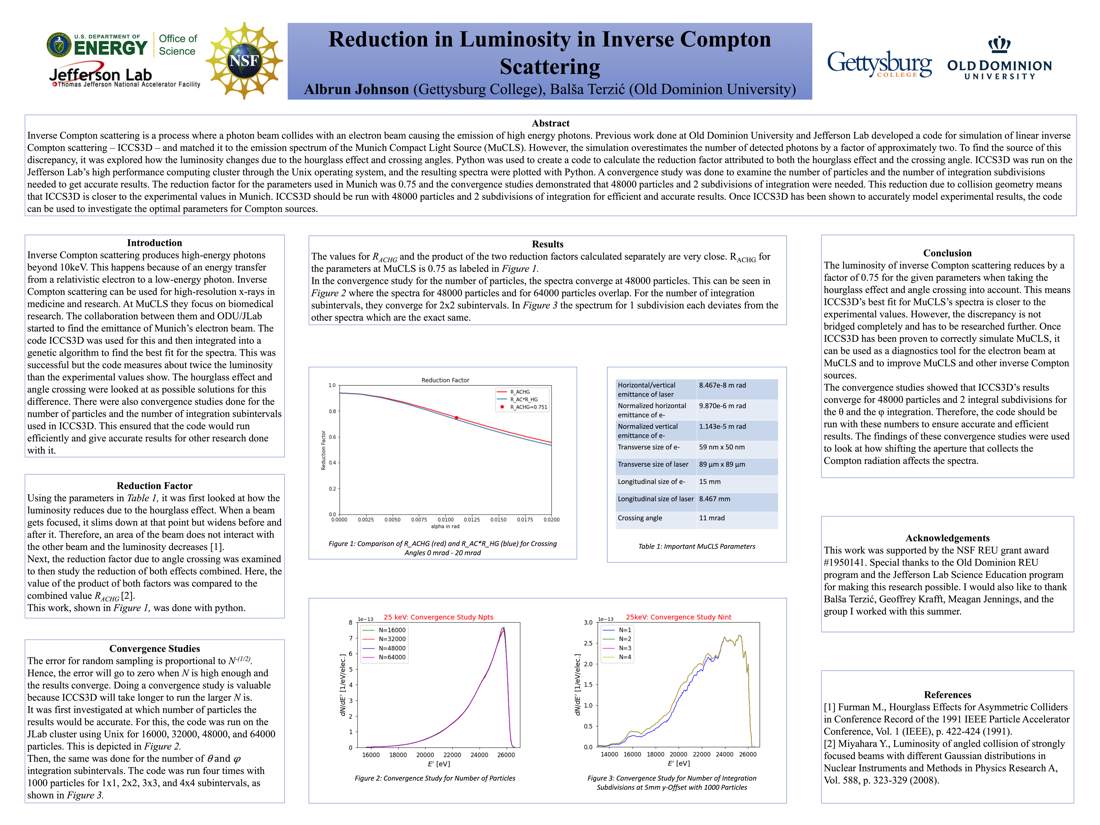Undergraduate Research at Jefferson Lab
Reduction in Luminosity in Inverse Compton Scattering
Student: Albrun Johnson
School: Gettysburg College
Mentored By: Dr. Balša Terzić
Inverse Compton scattering is a process where a photon beam collides with an electron beam causing the emission of high energy photons. Previous work done at Old Dominion University and Jefferson Lab developed a code for simulation of linear inverse Compton scattering - ICCS3D - and matched it to the emission spectrum of the Munich Compact Light Source (MuCLS). However, the simulation overestimates the number of detected photons by a factor of approximately two. To find the source of this discrepancy, it was explored how the luminosity changes due to the hourglass effect and crossing angles. Python was used to create a code to calculate the reduction factor attributed to both the hourglass effect and the crossing angle. ICCS3D was run on the Jefferson Lab's high performance computing cluster through the Unix operating system, and the resulting spectra were plotted with Python. A convergence study was done to examine the number of particles and the number of integration subdivisions needed to get accurate results. The reduction factor for the parameters used in Munich was 0.751 and the convergence studies demonstrated that 48000 particles and 2 subdivisions of integration were needed. This reduction due to collision geometry means that ICCS3D is closer to the experimental values in Munich. ICCS3D should be run with 48000 particles and 2 subdivisions of integration for efficient and accurate results. Once ICCS3D has been shown to accurately model experimental results, the code can be used to investigate the optimal parameters for Compton sources.
[Watch the presentation on YouTube]

Citation and linking information
For questions about this page, please contact Education Web Administrator.
